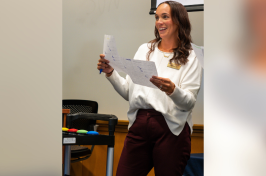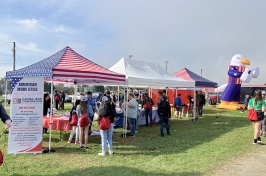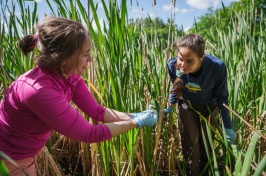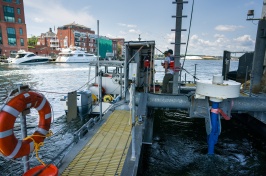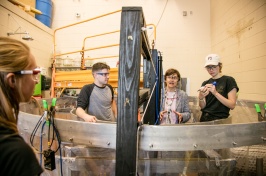Researchers Search for Non-Native Species That Threaten N.H.'s Coast
DURHAM, N.H. - On Monday, Aug. 5, 2013, a team of researchers will descend upon the rocky coast of New Hampshire's Seacoast searching out non-native marine species that can threaten native populations of shellfish and damage waterfront structures like piers, docks and pilings as well as threaten public health through disease and pathogens.
The one-day New Hampshire sweep is part of a six-day effort to collect, identify and catalog marine organisms in coastal waters from Maine's mid-coast to Cape Cod and Rhode Island. The research team consists of researchers from universities and agencies who were recruited by the Massachusetts Office of Coastal Zone Management (CZM) and the Massachusetts Institute of Technology (MIT) Sea Grant, a research program of the National Oceanic and Atmospheric Administration. The Piscataqua Region Estuaries Partnership (PREP) gave financial support to the effort to ensure that New Hampshire's coast was included in the wider study.
Goals of the study include developing a baseline inventory of marine species, identifying species recently introduced to local ecosystems and helping natural resource managers prevent and control future invasions of non-native species. Surveys in 2000, 2003, 2007 and 2010 revealed over 30 introduced marine organisms, several of which were identified for the first time in New England coastal waters.
"It is important to be on the lookout for invasive species to protect the estuary. By being part of this survey, PREP was able to bring world experts to New Hampshire to tell us which non-native species are present in our estuaries," said Rachel Rouillard, PREP's executive director.
On Monday, Aug. 5, the team will start at the UNH Coastal Marine Lab on New Castle at 8:05 a.m. until about 9:30 a.m. and then travel to Hampton State Pier/River Marina in Hampton from 10:15 a.m. to 12:30 p.m. The team will return in the evening to the lab of Larry Harris at the University of New Hampshire to analyze the samples further.
"There are some sea weeds that are spreading quickly on the coast, especially a red alga called Heterosiphonia japonica that is fouling beaches and causing problems with the tourist industry," said UNH Professor of Zoology Larry Harris. "Without this kind of survey assessment we might not have found the red alga or realize how fast it is spreading."
In New England coastal waters, the European green crab and Asian shore crab prey on commercially valuable shellfish, while other invasive species damage piers and pilings, clog pipes and cause public health problems through disease and pathogens.
About PREP:
The Piscataqua Region Estuaries Partnership (PREP) has been working to protect and preserve the Great Bay and Hampton-Seabrook Estuaries since 1995. Through water testing, monitoring and research efforts, the PREP staff is able to keep federal, state and municipal leaders and citizens informed on the ever-changing conditions of our community's water and environment in the 52 Seacoast towns served.
-30-
-
Media Contact
Rachel Rouillard | Piscataqua Region Estuaries Partnership | rachel.rouillard@unh.edu | 603-862-3948
Latest News
-
October 30, 2024
-
October 10, 2024
-
October 8, 2024
-
October 3, 2024
-
October 1, 2024








